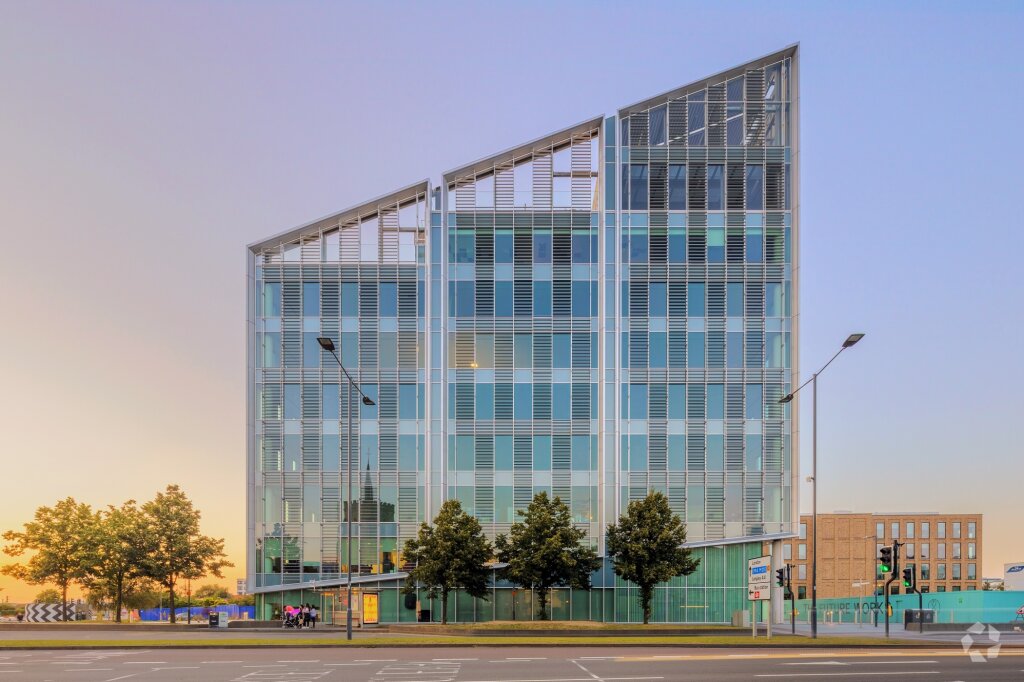This summer it’s not just the London 2012 Olympics celebrating a birthday, as Cycle to Work Day also celebrates its 10th anniversary on the 4th August this year.
But after a decade of increasing cycling usage, most notably amidst the pandemic, what legacy has this left on office specifications and what will the next ten years hold, where record fuel bills and a challenging economic outlook mean active commuting may have a more important role to play than ever?
Earlier this year the BCO released a new research report, The Market Cycles II, which lays bare the transformation in active commuting that has taken place over recent years, especially following the pandemic. In 2019, 28% of all trips in England were made by cycling and walking, however between 2020 and 2021 cycling in England rose by 46%. Data from Mintel showed the pandemic also led to a 22% increase in the sale of bicycles in the UK from 2019-2020, while e-bike sales rose 70% year-on-year in 2020. This rise in active commuting was supported by the government too, with a £2 billion plan announced in May 2020 to encourage cycling and walking to improve health and the environment over the course of the parliament, in addition to over £320 million provided to local authorities through the Emergency Active Travel Fund during 2020/21.
However, while the Walking and Cycling Index 2021 found that 37% of all UK residents cycle, comprising around 6.5 million people in England, with many starting cycling during the pandemic, it also discovered that far fewer (17%) cycle on a regular basis. Cycling UK reports that in England only 5% of commuting trips are made by bike, suggesting the post-pandemic shift in travel habits has had some rollback. As a result, there is enormous potential for more people to cycle for everyday transport and recreation in cities and towns across the UK. However, current cycling participation is not equal and barriers to cycling can be far more pronounced for some people. For example, the Cycle to Work scheme, which has allowed over a million UK employees to obtain bicycles and cycling equipment tax-free through salary sacrifice, is barred to those whose earnings are at or slightly above the National Minimum Wage, as well as people who are self-employed, groups identified by active travel advocates as having the most to gain from the scheme.
Even more important are end-of-trip facilities at the workplace. What is clear is that huge strides have been made in the past decade, with landlords and developers of office space embracing the needs of active commuters. In 2017 the BCO found nearly half of people surveyed said their offices did not have showers (45%) or covered and secured parking (47%), whereas in 2022 more than three quarters (84%) said their offices provided showers and over two-thirds (68%) provided covered and secure parking. The provision of cycling facilities has been an increasingly important requirement on occupiers’ wish lists for some time, but this differentiating feature has now been taken to the next level as the ‘flight to quality’ persists and occupiers continue to up their offer to attract employees back to the office.
“Developers will need to go further, offering more and better amenities tailored to cyclists, in addition to catering for other alternative forms of transport, which landlords are already acting upon.
”
A complementary survey of landlords showed that two thirds (66%) are adding new or enhancing existing cycling facilities, with more than four in five (87%) planning to increase capacity for accommodating power-assisted cycles and e-bikes, ensuring all workers regardless of age and ability have the option of embracing the active commute.
At The Future Works, our 100,000 sq ft office building in Slough, developed in partnership with AshbyCapital, we have considered the whole tenant journey to make active commuting as easy as possible. The location of the bike store and changing rooms gives fast and easy access to the workspaces; there’s a touch-free water fountain near the bike store and changing rooms for rehydration on arrival; and the changing rooms feature keyless lockers, complimentary towels, hairdryers and hair straighteners. Widescreen TVs mean employees can catch up on the news whilst getting changed, while free Wi-Fi means they can check e-mails before getting to their desks. A drying room makes an active commute possible whatever the weather, and we also have a bike repair station with tools to sort out punctures and other simple jobs, as well as organising regular visits from a bike repair company.
When Cycle to Work Day began in 2012, one could not have predicted quite what a tumultuous decade would follow. The progress made since then is undeniable and should be applauded, however amid the cost-of-living crisis, the property industry can go further to remove barriers to active commuting; doing everything it can to support those cycling, running, walking, or even scooting to work.
